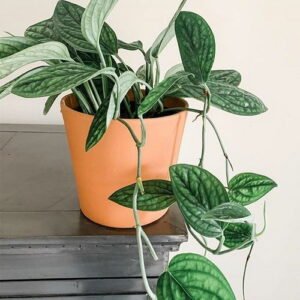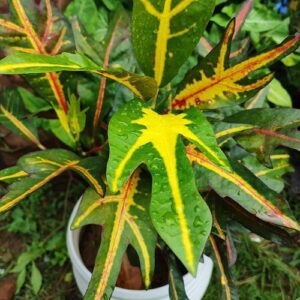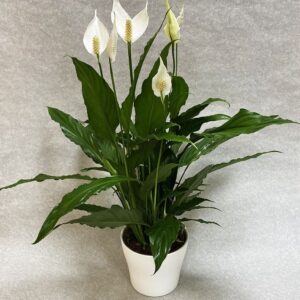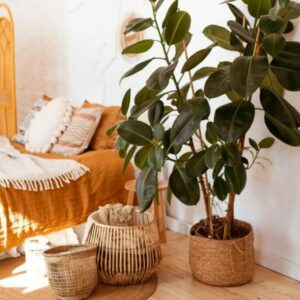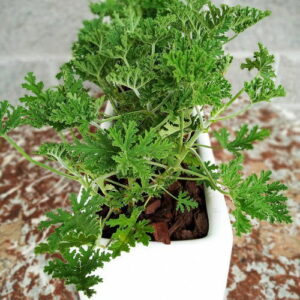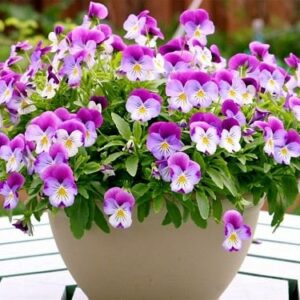It’s hard not to be drawn in by the large, patterned foliage and colorful bracts Anthurium. Here is a brief introduction to some of the most beautiful anthurium varieties.

The genus Anthurium consists of countless species, some of which thrive as houseplants. Whether you prefer colorful bracts or decorative foliage, there is an anthurium for everyone! Read on for our roundup of the most beautiful Anthurium species.
Anthurium varieties and colors
With around 1000 different species, Anthurium is a versatile genus of the arum family (Araceae) that comes in many different shapes and colors. Even within species, Anthurium varieties have bracts that range from white, through pink, purple and red to black. What all anthuriums have in common, however, is their evergreen, decorative foliage. Here is an introduction to some of them Anthurium species that have become popular houseplants.
Overview of the most beautiful anthurium species and varieties
1. Anthurium crystallinum
Anthurium crystallinum is known for its dark green leaves and striking white vein patterns. Its heart-shaped leaves can have a purple hue at first before turning green as they develop, while the flowers are quite subtle. In his native South America, Anthurium crystallinum usually grows as an epiphyte, perched on trees or other plants. As such, it is best to plant this anthurium in loose orchid soil. Its aerial roots are not adapted to life in ordinary potting soil.

2. Anthurium warocqueanum

Queen anthurium (Anthurium warocqueanum) looks pretty Anthurium crystallinum. Here, too, the plant has dark green leaves, eye-catching white vein patterns and subtle flowers. With proper care, the lance-shaped leaves of queen anthurium can grow up to two meters in size, which is why the species is known as the “anthurium queen”. In accordance with its original habitat, Anthurium warocqueanum likes bright, moist conditions.
3. Anthurium andreanum
Athurium andreanum is a particularly popular houseplant. Also known as the flamingo flower, flamingo lily or painter’s palette, Athurium andreanum has heart-shaped leaves that grow up to 40 cm wide, and a flower bulb that is enclosed in a colorful bract. The color of this bract depends on the variety of the plant.

4. Anthurium scherzerianum

Anthurium scherzerianum, also commonly known as flamingo flower or pigtail plant, is another popular houseplant. In contrast to anthurium andreanum, anthurium scherzerianum the leaves are elongated and, at 30 cm, somewhat small. Fortunately, what the pigtail plant lacks in leaf size, it usually makes up for in flower density. Anthurium scherzerianum thrives in loose soil and good water supply. It is actually possible to keep this plant in water without any soil at all!
Hybrids of Anthurium andreanum and Anthurium scherzerianum are also common:
- Anthurium andreanum ‘Baron’: variety with green-pink colored bracts
- Anthurium andreanum ‘Rosee Choco’: variety with deep red bracts
- Anthurium andreanum ‘Midori’: variety with green bracts
- Anthurium andreanum ‘Skål’: variety with pink bracts
- Anthurium andreanum ‘Akropolis’: variety with white bracts
Tip: If your anthurium is not getting enough nutrients, it may produce fewer flowers or none at all. To ensure an adequate supply of nutrients, fertilize your anthurium little and often. A potassium-rich fertilizer, such as our Plantura Liquid Houseplant Food, is ideal for this, as anthuriums require a lot of potassium when they flower.

5. Anthurium veitchii
The Anthurium veitchii the species is also known as the “king of anthurium”. As with Anthurium warocqueanum, the leaves of king anthurium can be very large. They are also lanceolate in shape, but exhibit ridges instead of a white vein pattern. This anthurium likes a warm, humid climate and grows epiphytically in nature, so its roots prefer a very airy substrate, such as orchid soil.

6. Anthurium clarinervium
Anthurium clarinerviumalso known as the cotyledon plant, looks confusing Anthurium crystallinum. Both species have dark green, heart-shaped leaves that display a beautiful white vein pattern. However, the two species can be distinguished by the color of their berries; each produces fruit on its flowering bulbs. Like most anthuriums, this species prefers a bright spot, but not full sun, as this can cause the leaves to burn.

7. Anthurium magnificum
Like the look of Anthurium clarienrvium and Anthurium crystallinum, but think they are a little too small? Then Anthurium magnificum is the plant for you! The foliage of this species is similar to its two relatives, but the plant can grow much larger. In fact, it may need some support to grow up against.
8. Anthurium forgetii
Anthurium forgetii is not known for its colored bracts, but for its small, round leaves that taper to a point. These green leaves are either patterned with white veins or simple. In keeping with its tropical, epiphytic nature, Anthurium forgetii prefers high humidity and loose orchid soil.

9. Anthurium vittarifolium
Anthurium vittarifolium has long green leaves that hang from the plant like tails. This makes it ideal for a hanging basket. In his tropical home, Anthurium vittarifolium is an epiphyte, meaning it grows on other plants and trees from which its leaves can then hang.

This anthurium has particularly dark green leaves, which are lightly veined and lance-shaped. The leaves resemble a knight’s shield and hang down at the end of long stems. The plant can grow 40 to 50 cm tall and grows hemi-epiphytically in South America. This means that it begins its life perched on other plants and as the roots grow, the plant touches the ground and uses it as an anchor. As such, growing the plant in orchid soil is good for growth, but not absolutely necessary.
11. Anthurium polyschistum
Anthurium polyschistum has a subtle flower and leaves that are simple and cleft. In fact, the leaves resemble hemp, which is why this plant is also called “false marijuana” or “faux marijuana”. Anthurium polyschistum climbs upwards and does not let its leaves hang. It needs moisture and indirect light, as well as moist, slightly acidic soil to thrive. The soil should not be too rich in nutrients. We recommend mixing sphagnum moss with a high-quality potting soil.

12. Anthurium luxurians
Another unusual species of anthurium is Anthurium luxurians. Its leathery, heart-shaped leaves have deep ridges that make it look like the surface of a diamond. Sitting on the end of short stems, these leaves are usually very dark red or purple and tend to change with age, from dark red to dark green. Anthurium luxurians grows best in partial shade and well-drained soil. A mixture of well-draining potting soil and orchid soil made from pine bark and Sphagnum moss is ideal.
Like anthuriums, aloes are popular evergreen houseplants that come in a variety of shapes and colors. Juice off Aloe vera also helps relieve sunburn and other skin conditions. Read more about this wonderful plant in our article about Aloe vera.
